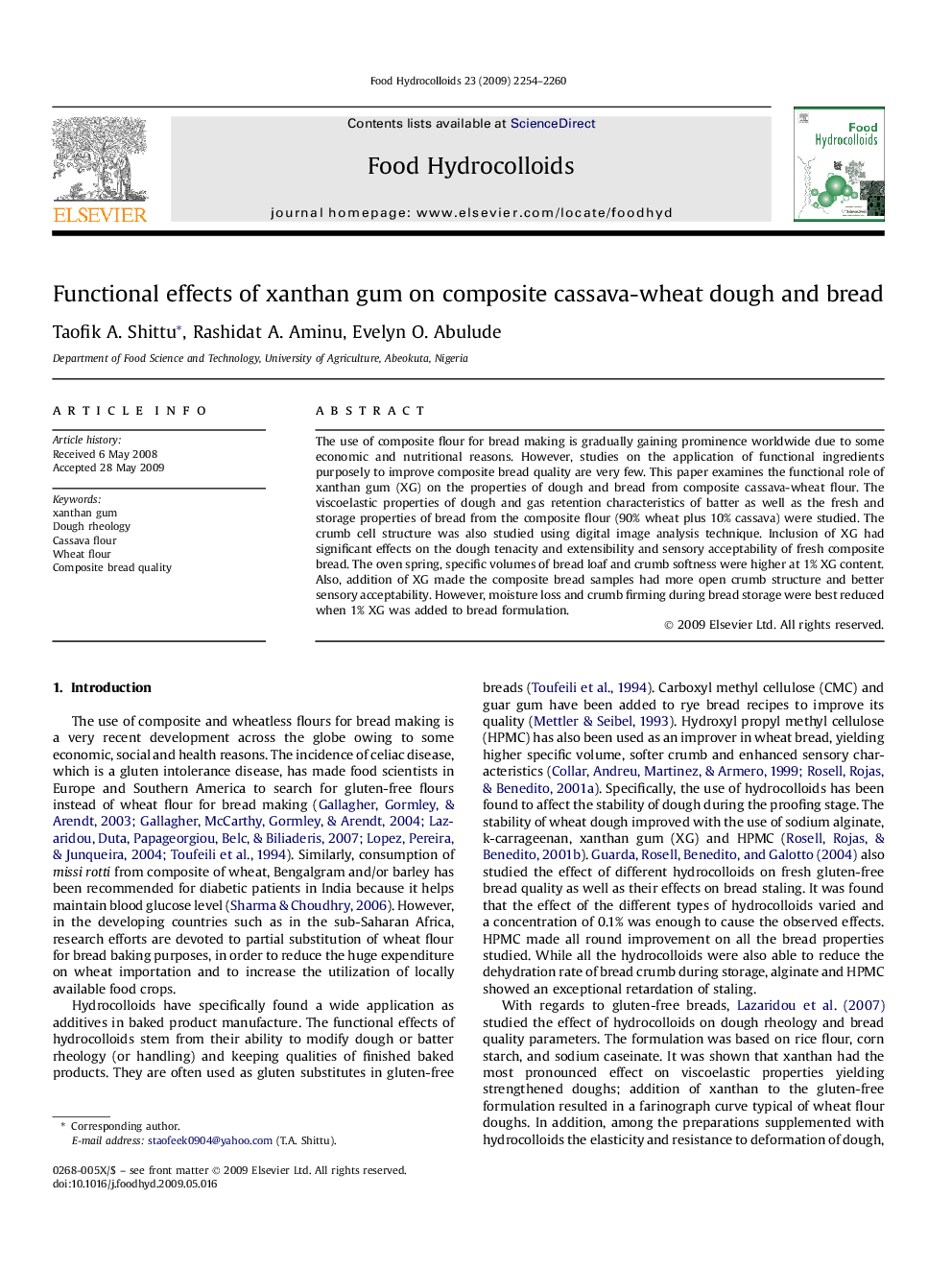| Article ID | Journal | Published Year | Pages | File Type |
|---|---|---|---|---|
| 605467 | Food Hydrocolloids | 2009 | 7 Pages |
The use of composite flour for bread making is gradually gaining prominence worldwide due to some economic and nutritional reasons. However, studies on the application of functional ingredients purposely to improve composite bread quality are very few. This paper examines the functional role of xanthan gum (XG) on the properties of dough and bread from composite cassava-wheat flour. The viscoelastic properties of dough and gas retention characteristics of batter as well as the fresh and storage properties of bread from the composite flour (90% wheat plus 10% cassava) were studied. The crumb cell structure was also studied using digital image analysis technique. Inclusion of XG had significant effects on the dough tenacity and extensibility and sensory acceptability of fresh composite bread. The oven spring, specific volumes of bread loaf and crumb softness were higher at 1% XG content. Also, addition of XG made the composite bread samples had more open crumb structure and better sensory acceptability. However, moisture loss and crumb firming during bread storage were best reduced when 1% XG was added to bread formulation.
